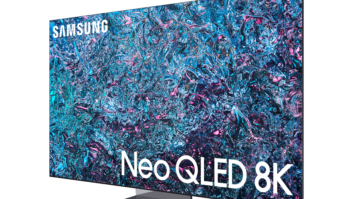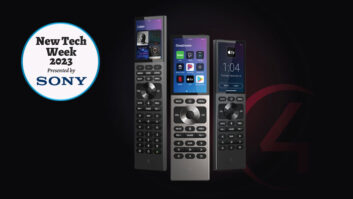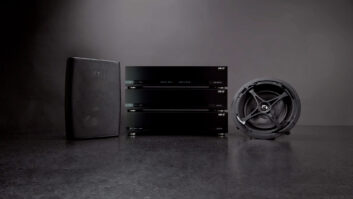Maximizing Your Picture Size Across A Range Of Video Formats
I just got back from dinner with a prospective client. It was quite enjoyable, but it turned out to be a ploy to try to convince me to use a screen for his project that is just absurdly too big. He’s a nice guy and a great client. How do you say no?
THE IDEAL SCREEN SIZE
It’s not that big screens are bad. In fact, a screen should ideally be 180 degrees wide to cover your entire field of vision. So why aren’t they? Resolution is the reason. A picture that size would be laughably blurry, even if the source were 4K video or 70mm film. To give you some idea, the widest picture that you can hope to get out of 35mm film is about 50 degrees, which is currently the reference standard. Of similar quality is high-bandwidth 250 Mbps 2K Digital Cinema.

But that’s at the cinema. We don’t use 35mm film or 2K video in home theater. For us, the gold standard is Blu-ray, with its 48 Mbps peak bitrate (the average is lower) and 1920×1080 resolution. The best you can hope for is around 40 degrees, and that’s for a reference-caliber film-to-video transfer. Our clients, however, also watch a lot of other things, like DVD, downloads, satellite, YouTube, etc. These are all lower resolution and more highly compressed. The best you can hope for from these is 20-30 degrees, and that’s not to mention aspect ratio. For every resolution, there are four common aspect ratios (1.33, 1.78, 1.85, 2.35) and a whole host of other oddballs. Does the picture get shorter, taller, narrower, or wider when the aspect changes?
C(ONSTANT) I(MAGE) H(EIGHT) 2.35
I admire the folks who have recognized this conundrum and are working to solve it (as opposed to just giving the customer what he or she wants, even if it’s wrong). The most popular solution is CIH 2.35, which uses a combination of video scaling, anamorphic lenses, and 2:35 native aspect screens to maximize the scope and impact of 2.35 material while sacrificing overall square footage of screen area for other aspect ratios. Overall, it’s not terrible, but there are challenges, including scaling artifacts, lens optics and mechanics (the lens must sometimes be removed in certain systems), and most important of all, the picture size of 16:9 HD is just plain small, and customers feel crestfallen by the “shrinkage” when their friends come over for the big game. Plus, CIH only addresses 2.35/1.78/1.33 HD images. It doesn’t even offer a solution for lower resolution sources.

Anthony Grimani (agrimani@ pmiltd.com) is president of Performance Media Industries, a California-based acoustical engineering firm specializing in home theater design and calibration.
EVERYTHING ALL AT ONCE
I’ve been grappling with this issue for some years now and have finally decided to take the bull by the horns and create an elegant solution. The main drive is to provide complete adaptability to all common resolutions and aspect ratios. We have named the process PMI 2.0, and it is now installed in many private screening rooms with great success and strong customer satisfaction. To see it in action for yourself, swing by the Stewart Filmscreen booth at CEDIA EXPO 2009 this month in Atlanta. We start by engineering the projector and screen system to match viewing angles to source resolutions. The idea is to maximize picture size across the entire range of target formats. A 2.0:1 aspect ratio screen with four-way masking is coupled to a projector with programmable precision presets for zoom, focus, and lamp power.
The result is a screen and image size that essentially morphs to any size and aspect ratio that you want. For high-rez stuff like Blu-ray, you can open the screen up to full width, knock off a little height, and you’ve got the cinema experience. When a major sporting event comes on, the full height opens up and you take a little off each end. For DVD and other low-rez, low-bandwidth content, the image will be smaller (emphasize sharper). Best of all, you can even go with a giant screen suitable for future material with super-high resolution, such as UHDTV.
THE RIGHT PICTURE EVERY TIME
While this may seem like a shameless bit of self-promotion, those of you who have read this column for a while know that my interest truly lies in furthering the cause of quality audio and video. We recognized the need for a picture system that is optimized for every format. PMI 2.0 is “constant area” instead of “constant height;” it’s flexible, has a huge WOW factor, and is future-proof. Imagine other uses, such as immersive gaming or presentations, and you can see that there are limitless possibilities. Chase Walton contributed to this column.







